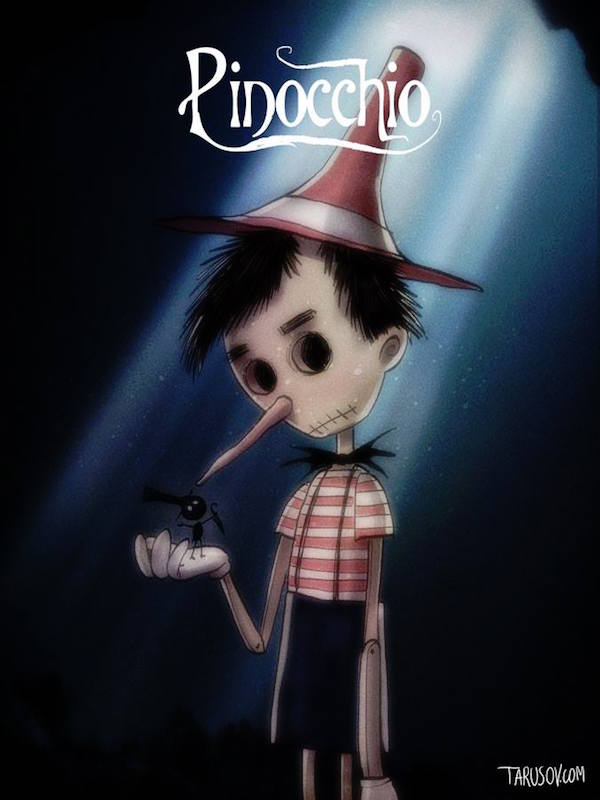Today in Movie Culture: Grindhouse 'Star Wars,' Tim Burton's 'Pinocchio' and More
Here are a bunch of little bites to satisfy your hunger for movie culture:
Reimagined Movie of the Day:
Mashable made a trailer that makes Star Wars into a Grindhouse movie:
[embedded content]
Mashup of the Day:
Artist Jerome Gomez mixed together Star Wars and Blade Runner for a piece he titles “A Dark Jedi and a Renegade Princess” (via Live for Films):
Misunderstood Movie of the Day:
The Wolf of Wall Street is badly analyzed by an alien in the latest episode of Earthling Cinema:
[embedded content]
Fan Build of the Day:
Learn how to make a replica golden snitch from the Harry Potter movies in the latest episode of DIY Prop Shop:
[embedded content]
Cosplay of the Day:
Who wouldn’t want another Hellboy sequel if all the characters were recast with pugs (via Fashionably Geek)?

Visual Effects Reel of the Day:
See why Jurassic World should have been nominated for an Oscar for its visual effects with this video from ILM (via io9):
[embedded content]
Fake Remake of the Day:
Tim Burton is apparently the go-to guy for directing live-action remakes of Disney’s animated classics, but here’s what it would look like if he directed an animated remake of Disney’s Pinocchio. See other reimagined Disney animated films at Nerd Approved.

Retrospective Trailer of the Day:
In honor of the 400th anniversary of William Shakespeare‘s death, the British Film Institute has programmed a series on Shakespeare on film. Here’s a trailer for the retrospective:
[embedded content]
Supercut of the Day:
Jim Casey compiled what he believes to be the most beautiful shots in movie history (via Geek Tyrant):
[embedded content]
Classic Trailer of the Day:
Today is the 55th anniversary of the release of John Huston‘s The Misfits. Watch the original trailer for the film, which stars Marilyn Monroe, Clark Gable and Montgomery Clift, below.
[embedded content]
and
This entry passed through the Full-Text RSS service – if this is your content and you’re reading it on someone else’s site, please read the FAQ at fivefilters.org/content-only/faq.php#publishers.



